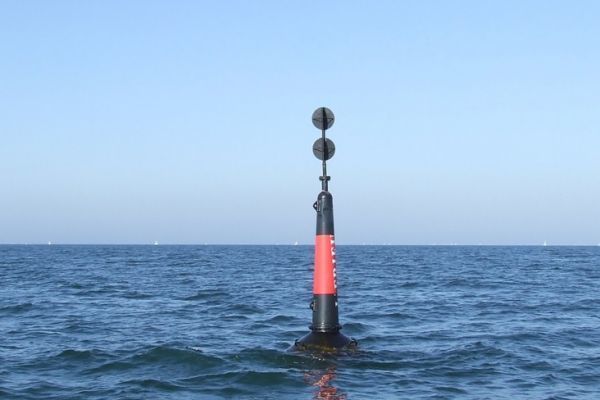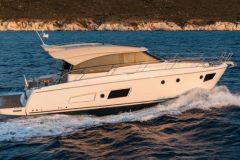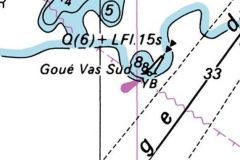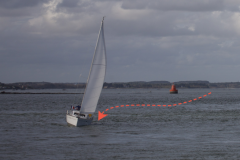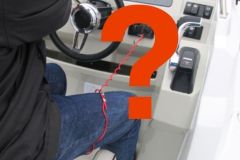Every week, we present you with a question about your boating license. To help you validate your knowledge, or to discover new and unexplored areas. This week, we tackle a question on buoyage.
Two balls on top of each other
The buoy in the picture is an isolated danger buoy. As the name implies, these markers warn of an isolated hazard located in safe, offshore waters. The hazard, whether a rock or a wreck, is often small and located beneath the marker. When faced with this type of buoy, it's best to steer well clear of it, whether to port or starboard.
This buoy is colored red and black (red between the 2 blacks) and materialized by two spheres separated from each other. The rhythm of its light, when it exists, is two grouped white flashes.
If, in our example, we're talking about the L'Épieu danger buoy, south of the entrance to the Golfe du Morbihan, you can also find this type of marker in the form of a turret installed directly on the rock it marks.
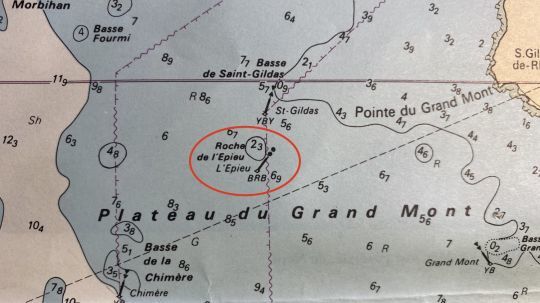
On the map, the buoy is marked by 2 black spheres.
